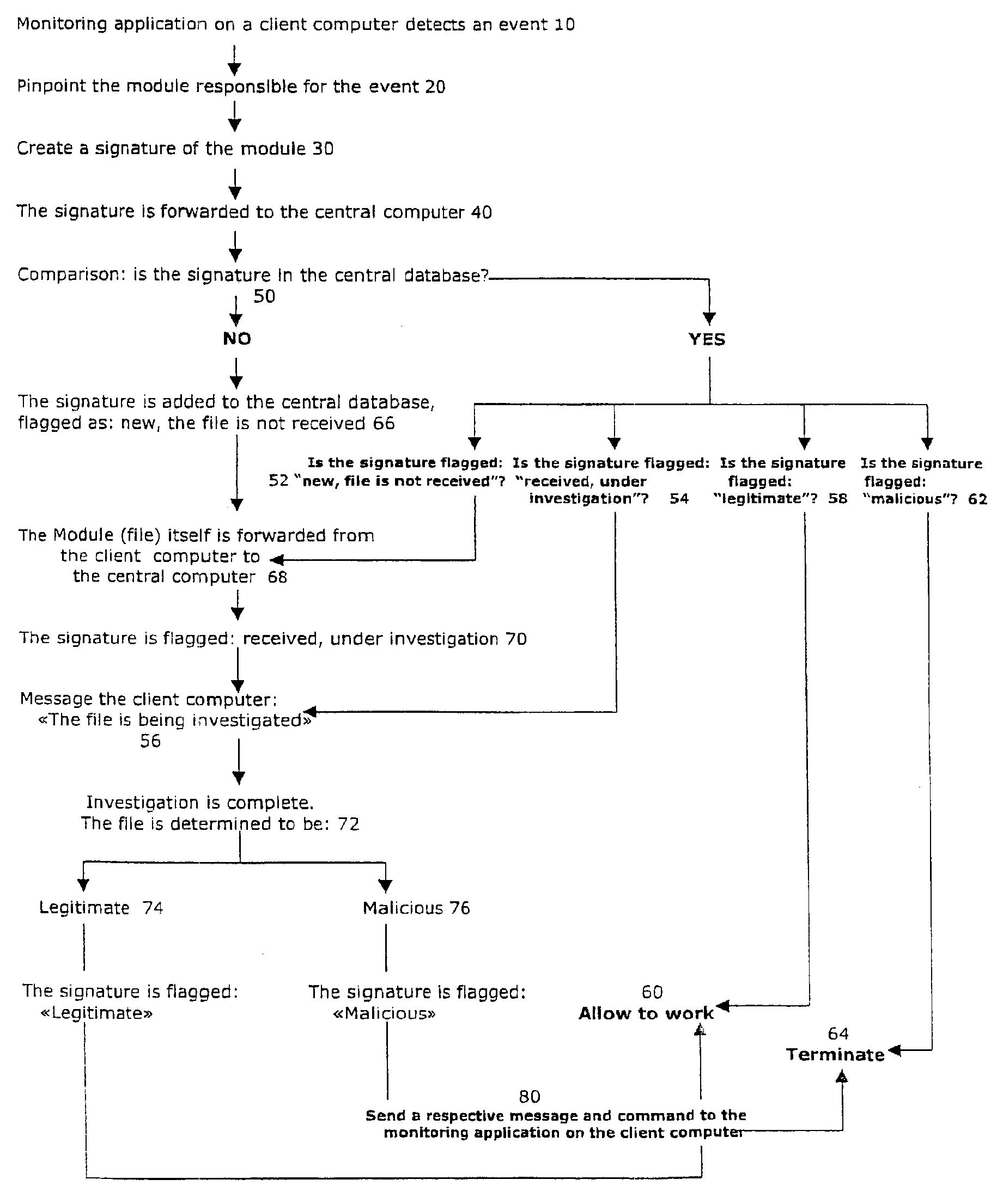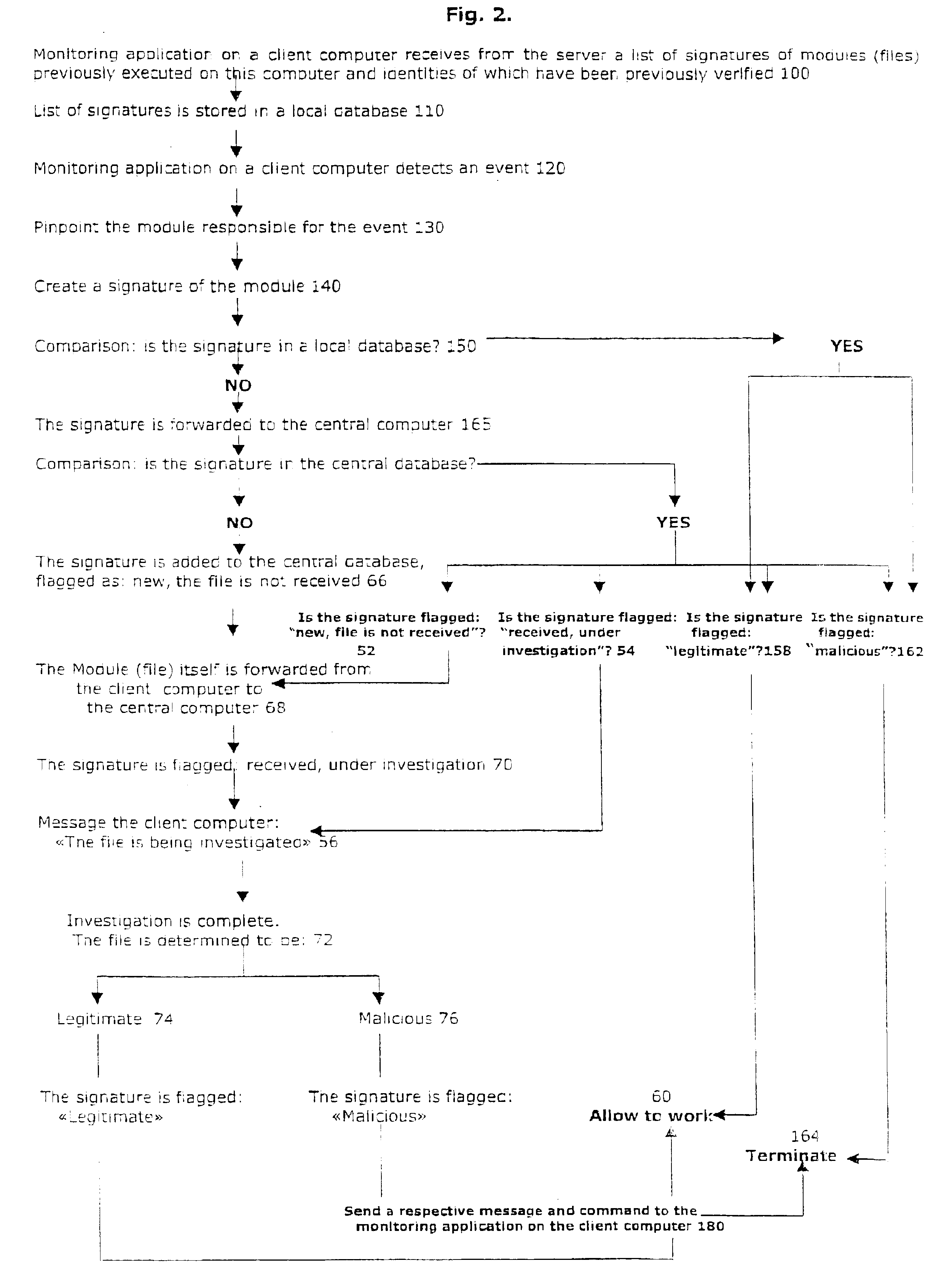System and method of enforcing executable code identity verification over the network
- Summary
- Abstract
- Description
- Claims
- Application Information
AI Technical Summary
Benefits of technology
Problems solved by technology
Method used
Image
Examples
Embodiment Construction
[0033]The present invention has utility as a computer executable code authentication, identity and intent verification system. The present invention delivers several advantages over existing systems in being more effective in uncovering new malicious programs without and, upon detection of a new malicious program, all users become immediately and simultaneously protected against the same threat regardless of their expertise and without the need to have their local database updated.
[0034]Referring now to FIGS. 1 and 2, there is shown a system of monitoring and analyzing computer executable code. The system includes a central computer connected to a computer network (e.g., a wide area network (WAN) such as the Internet or a local area network (LAN)) and at least one client computer that is connected to the central computer through the computer network. The client computer is preferably a personal computer (PC) workstation. However, other types of electronic devices capable of receivin...
PUM
 Login to View More
Login to View More Abstract
Description
Claims
Application Information
 Login to View More
Login to View More - Generate Ideas
- Intellectual Property
- Life Sciences
- Materials
- Tech Scout
- Unparalleled Data Quality
- Higher Quality Content
- 60% Fewer Hallucinations
Browse by: Latest US Patents, China's latest patents, Technical Efficacy Thesaurus, Application Domain, Technology Topic, Popular Technical Reports.
© 2025 PatSnap. All rights reserved.Legal|Privacy policy|Modern Slavery Act Transparency Statement|Sitemap|About US| Contact US: help@patsnap.com



